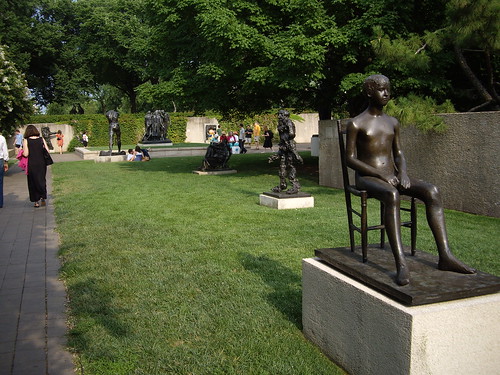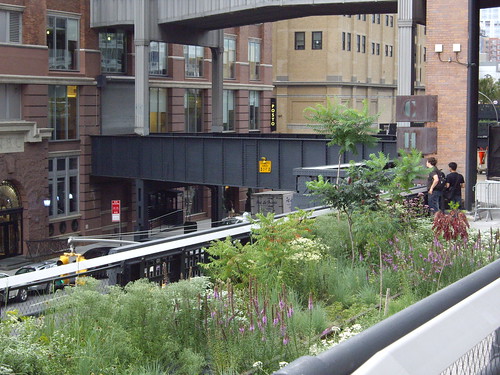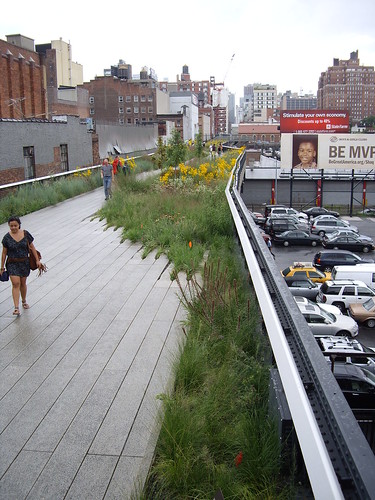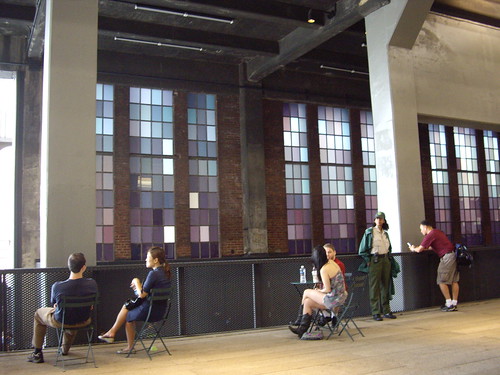Humanizing Green Architecture
While I was traveling earlier this month, I was thinking about a conversation that transpired on this blog between Adrienne Skye Roberts and Julian Myers. It was sparked by Adrienne’s post about the Federal Building in San Francisco, and a question I asked her about humanizing green architecture. By “humanizing,” I mean creating spaces that are scaled to promote human social interactions. The Federal Building’s public areas fail to do this because their design encourages rapid passage through them, rather than prolonged engagement or interaction.
What are some better models for public green spaces that encourage visitors to engage with one another and with the natural world? One that comes to mind is the museum garden, where art and botany are presented side-by-side. SFMOMA’s Rooftop Garden is a great place to escape the noise of the city and sneak in a few quiet moments of contemplation. It’s not exactly an example of green building itself, but like green architecture, it is concerned with integrating nature into urban life, and with promoting a more thoughtful consideration of the spaces in which we live and work.
Unlike the California Academy of Sciences’ living roof, the SFMOMA’s plants do not substantially offset the museum’s energy requirements. They are restricted to heavy planter boxes, oddly pedestal-like considering most of the garden’s sculpture sits directly on the cement floor. Perhaps what we have here is an example of socially humanizing architecture, with a lesser green aspect.
In Washington, DC and New York, I visited some other spaces where art and public green space intersect. Each is intended to promote some level of social interaction and engagement with nature. Each strikes a different balance between natural, artistic and architectural elements, and each is set in an urban location.
The Hirshhorn Sculpture Garden in Washington, DC, is a pocket park near the Washington Mall. It feels larger than it is because it’s a series of overlapping, staggered planes. Walking through the park, a visitor has the feeling that space is unfolding before him or her, at each turned corner. At its center is an installation by Dan Graham — an architectural form that disappears both visually and physically into open space at certain angles of view. Its complex interior structure creates a maze-like atmosphere that forces the viewer to recognize the existence of others in his or her proximity.
The Hirshhorn Sculpture Garden, and particularly the Graham installation, is a good example of green space being enhanced by art. The High Line in Chelsea, lower Manhattan, is more of a hybrid between constructed and planted space, with an art installation serving as a focal point.
The High Line was a freight line that served the industrial warehouses of western Manhattan from the 1930s until 1980. Designed to pass above streets and directly through certain high-volume factories, the High Line fell into disuse over the past 25 years. A consortium of Chelsea residents and businesses, including many gallerists, petitioned to have the structure converted into an innovative urban park instead of torn down to make room for more waterfront condos. Remnants of the original rail line have been preserved, and planted with a selection of wild-looking plants. Seating areas include a bank of lounge chairs on wheels, and benches integrated into the pathway that meanders above Chelsea all the way south to the busy Meatpacking District.
Spencer Finch’s public art project for the High Line was a collaboration between the City of New York’s Parks & Recreation Division, Creative Time, and the Chelsea Market, at the back of which Finch’s work is located. Government, non-profit and commercial entities all working together on a public art project could be a recipe for disaster — but Finch’s work is wonderfully appropriate in its site. Each glass pane represents a single pixel of color captured in photographs that Finch took every minute for 700 minutes during a day-long trip up and down the Hudson by boat. At some point during that day, the surface of the river that provides a backdrop to Finch’s installation approximated every color included in the work.
The High Line is an example of humanizing green building. It’s an adaptive reuse project, avoiding the financial and resource costs of new construction by repurposing existing structures to address changed architectural needs. It’s highly social, serving as a lunchtime getaway for people working in the neighborhood even as it begins to attract tourists as well. A great addition to the West Side waterfront, the High Line frames the river landscape, urban architecture and public art in an integrated and powerful way. Perhaps instead of building brand-new, enormous “green” buildings, we could be putting more money into genuinely enjoyable projects like this one.





Comments (1)
Thanks to Ms. Vikram for an interesting article. A third aspect true of most of these spaces, which she touches upon but doesn’t explore further here, is that they are free. We want to wander around spaces like the Hirshhorn Sculpture Garden or the High Line, and we can. Anyone can. Can we have a public humanized green architecture? As a people, can we create more welcoming, environmentally-friendly free spaces? I think so, but we must prioritize all three.